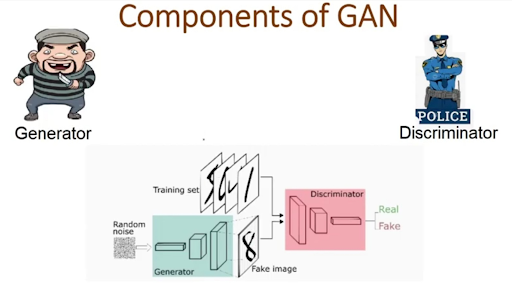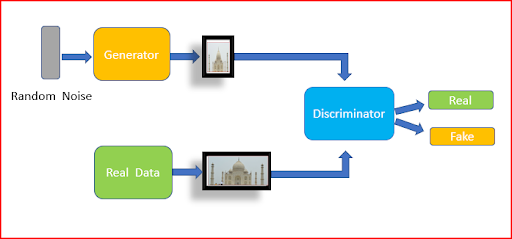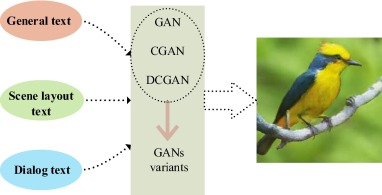
Deep learning has applications in multiple industries, and this has made it an important and attractive topic for researchers. The interest of researchers has resulted in multiple types of neural networks we have been discussing in this series so far. Today, we are talking about generative advertising neural networks (GAN). This algorithm performs the unsupervised learning task and is used in different fields of life such as education, medicine, computer vision, natural language processing (NLP), etc.
In this article, we will discuss the basic introduction of GAN and will see the working mechanism of this neural network, After that, we will see some important applications of GANs and discuss some real-life examples to understand the concept. So let’s move towards the introduction of GANs.
What are Generative Adversarial Networks?
Generative Adversarial Networks (GANs) were introduced by Ian J. Goodfellow and co-authors in 2014. This neural network gained fame instantly because it provided the best performance on its own without any external supervision. GAN is designed to take the data in the form of text, images, or other structured data and then create the new data by working more on it. It is a powerful tool to generate synthetic data, even in the form of music, and this has made it popular in different fields. Here are some examples to explain the workings of GANs:
- GANs are used to generate photorealistic images of people that do not exist in real life, but these can be generated by using the data provided to them.
- GANs can create fake videos in which people are saying words and doing tasks that are not recorded by the camera but are generated artificially with the GANs.
- People can use GANs to create advanced and better products and services by providing data on present products and services.
- We will discuss the applications of GANs in detail in just a bit.
GAN Architecture
The generative advertiser networks are not a single neural network, but their working structure is divided into two basic networks listed below:
- Generator
- Discriminator
Collectively, both of these are responsible for the accurate and exceptional working mechanism of this neural work. Here is how these work:
Working of GANs
The GANs are designed to train the generator and discriminators alternatively and to “outwit” each other. Here are the basic working mechanisms:
Generator
As the name suggests, the generators are responsible for the creation of fake data from the information given to them. These networks take the noise from the data and, after studying it, create fake data. The generator is trained to create realistic and related data to minimize the ability of the discriminator to distinguish between real and fake data. The generator is trained to minimize the loss function:
L_G = E_x[log D(x)] + E_z[log (1 - D(G(z)))]
Here,
- x = real data sample
- z = random noise vector
- G(z) = generated sample
- D(x) = probability that the discriminator outputs that x is real
Discriminator
On the other hand, the duty of the discriminator is to study the data created by a generator in detail and to distinguish between different types of data. It is designed to provide a thorough study and, at the end of every iteration, provide a report where it has identified the difference between real and artificial data.
The discriminator is supposed to minimize the loss function:
L_D = E_x[log D(x)] + E_z[log (1 - D(G(z)))]
Here, the parameters are the same as given above in the generator section.
This process continues, and the generator keeps creating data and the discriminator keeps distinguishing between real and fake data until the results are so accurate that the discriminator is not able to make any difference. These two are trained to outwit each other and to provide better output in every iteration.
Generative Adversarial Network Applications
The application of GANs is similar to that of other networks, but the difference is, that GANs can generate fake data so real that it becomes difficult to distinguish the difference. Here are some common examples of GAN applications:
GAN Image Generation
GANs can generate images of objects, places, and humans that do not exist in the real world. These use machine learning models to generate the images. GANs can create new datasets of image classification and create artistic image masterpieces. Moreover, it can be used to regenerate the blur images into more realistic and clear ones.
Text Generation with GANs
GAN has the training to provide the text with the given data. Hence, a simple text is used as data in GANs, and it can create poems, chat, code, articles, and much more from it. In this way, it can be used in chatbots and other such applications where the text is related to the existing data.
Style Transfer with GANs
GANs can copy and recreate the style of an object. It studies the data provided to it, and then, based on the attributes of the data, such as the style, type, colours, etc., it creates the new data. For instance, the images are inserted into GAN, and it can create artistic works related to that image. Moreover, it can recreate the videos by following the same style but with a different scene. GANs have been used to create new video editing tools and to provide special effects for movies, video games, and other such applications. It can also create 3D models.
GANs Audio Generation
The GANs can read and understand the audio patterns and can create new audio. For instance, musicians use GANs to generate new music or refine the previous ones. In this way, better, more effective, and latest audio and music can be generated. Moreover, it is used to create content in the voice of a human who has never said those words generated by GAN.
Text to Image Synthesis
The GAN not only generates the images from the reference images, but it can also read the text and create the images accordingly. The user simply has to provide the prompt in the form of text, and it generates the results by following the scenario. This has brought a revolution in all fields.
Hence, GANs are modern neural networks that use two types of networks in their structure: generators and discriminators to create accurate results. These networks are used to create images, audio, text, style, etc that do not exist in the real world but these can create new ones by reading the data provided to them. As the technology is moving towards advancements, better outputs are seen in the GANs' performance. I hope you have liked the content. You can ask anything related to the topic in the comment section.






